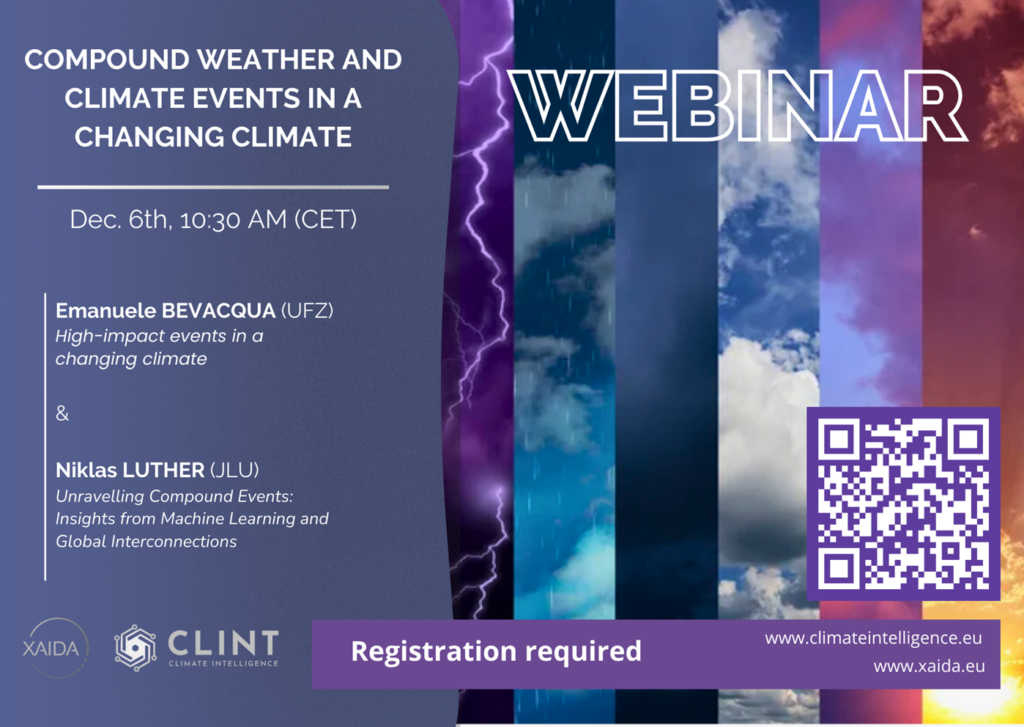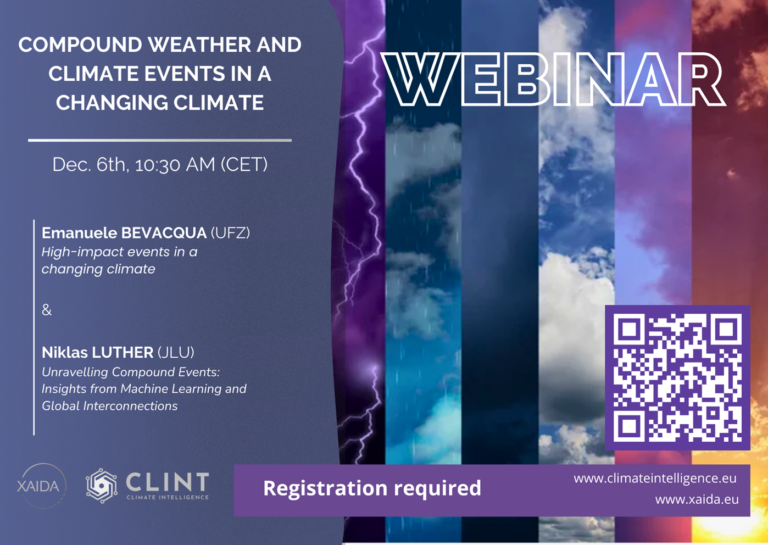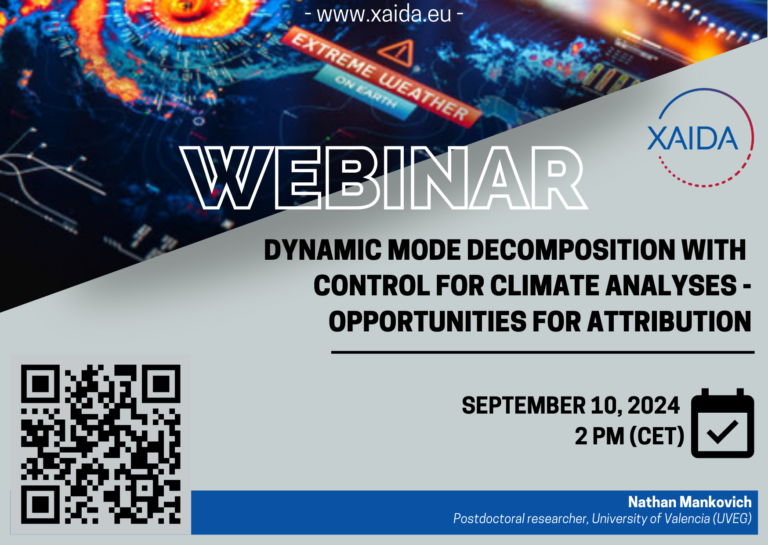[POSTPONED] XAIDA & CLINT WEBINAR | COMPOUND WEATHER AND CLIMATE EVENTS IN A CHANGING CLIMATE
XAIDA is now hosting an open monthly webinar. Within the XAIDA project, sixteen research institutes and climate risk practitioners, aim to develop and apply novel artificial intelligence methods to better assess and predict the influence of climate change on extreme weather. Join the webinar each month to dive into interesting topics such as machine learning for climate extremes, the societal impact of extremes, and education about climate change.
Coordination: Maria Gonzalez-Calabuig (University of València), Manon Rousselle (IPSL)
Assistance: Apolline Sauvignet (IPSL)
December 6th, 2024 at 10:30 AM CET.
Chair: Dim Coumou (Vrije Universiteit Amsterdam (VU)).
Speaker: Niklas Luther (Justus-Liebig Universität Giessen (JLU))
Title: Unravelling Compound Events: Insights from Machine Learning and Global Interconnections
While many types of extreme events have been linked to significant socio-economic impacts, the combination of such events, either in space or time, can further amplify these effects in a non-linear relationship. This has led to a growing focus on compound events, which are combinations of not necessarily extreme climate events that result in socio-economic impacts. Here, we demonstrate, through two case studies, how the analysis of interconnected (extreme or non-extreme) climate events can be beneficial for risk assessment studies.
The first case study focuses on the impact of relatively wet and warm late winters followed by a dry spring on agriculture in Europe. Using statistical and machine learning methods, we reconstruct these events based on observed agricultural impacts to derive objective thresholds for such warm and dry conditions that lead to significant socio-economic impacts. Our findings suggest that imbalanced random forests can predict such events with reasonable accuracy at the local level, and that some of the derived thresholds are lower than those typically used for the detection of extreme events. This demonstrates that significant agricultural impacts can result from a combination of events that might be harmless individually but become hazardous when combined in space and time.
The second case study delves into the detection of dependencies of extreme events by focusing on heatwaves and droughts, which have been linked to severe damages in socioeconomic sectors such as agriculture, energy, and water resources as well as health. Making use of the inhomogeneous J-function, a tool that identifies extreme events while accounting for non-stationarities driven by climate change, we aim to identify global interconnectivities between these phenomena. Despite its potential, the analysis and interpretation of the J-function are often subjective, and its application to large datasets or ensembles poses challenges. We propose an AI-based automated interpretation tool to replace subjective assessment, enabling the evaluation of thousands of J-functions in a matter of seconds. Through this approach, we detect global interconnections between droughts and heatwaves while taking into account their altering frequencies, with a particular focus on how remote heatwaves and droughts influence the occurrence of such events in Europe.
_____________________
Speaker: Emanuele Bevacqua (Helmholtz Centre for Environmental Research (UFZ))
Title: High-impact events in a changing climate
Studying and communicating the potential for worst-case climate events is essential to support the development of robust adaptation strategies. For example, understanding how climate change amplified recent record-breaking events can provide insights into future risks. In the first part of the talk, I focus on the 2022 European drought, which resulted in the largest total water storage deficit in the satellite era over central-southern Europe. Our findings show that while precipitation deficits were the main driver, human-induced global warming contributed to 30% of the drought intensity and its spatial extent through increased evaporation. Notably, 14-41% of the climate change contribution came from the warming-driven soil drying that occurred before 2022, highlighting the importance of considering the lagged effects of climate change to avoid underestimating risks. In the second part of the talk, I take a broader, global perspective, examining multiple hazards, such as floods and heatwaves. I explore the potential for plausible worst-case future global climates, which is critical for developing effective adaptation measures. Based on a novel approach to identifying spatially coherent, potentially high-impact global climates, our results show that for some socioeconomic sectors, extreme climate outcomes are plausible at any warming level, even at seemingly safer levels such as +2 °C above pre-industrial conditions.
This work is part of the ADVICE project funds by the DFG.
Registration: xaidaproject@gmail.com







